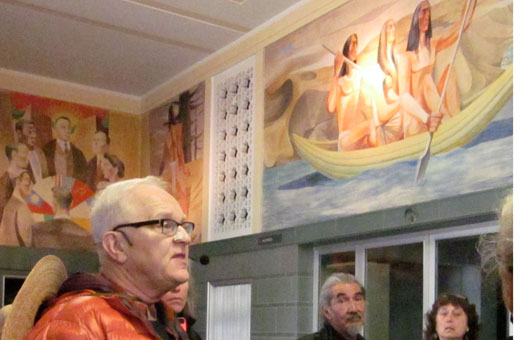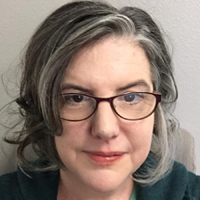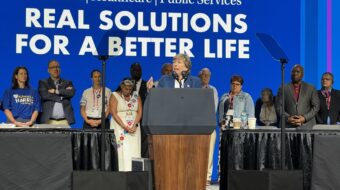
For 19 years, LaborFest of San Francisco has marked the occasion of the July 1934 waterfront labor struggles with a monthlong festival of events, films, and tours. Progressives and union leaders breathe life into the history that marked the beginning of the longshoremen’s struggle to gain their union, which included a unique and successful general strike in San Francisco. Guides from many organizations give tours of significant areas in historical events, also tying in the artists and artwork of the New Deal era.
Many outside of San Francisco have heard of Coit Tower, but perhaps fewer know that the muralists who painted the beautiful works inside were the first artists employed by the massive work program put into place by President Roosevelt to alleviate Depression-era joblessness. Furthermore, these same artists were witnesses to the violence of the 1934 waterfront fight, the “Battle of Rincon Hill,” which they could see from up in the Tower while it raged.
Gray Brechin and Harvey Smith of Living New Deal, an organization with a mission to catalogue and preserve New Deal projects in the U.S., are veteran guides of LaborFest tours, highlighting WPA projects that still exist in San Francisco. A mine of information like the story of Coit Tower’s artists, they also give a popular tour of the murals of Rincon Annex, which were the last works created by the public programs of the New Deal.
Living New Deal founder Brechin is a historical geographer and author of Imperial San Francisco: Urban Power, Earthly Ruin. A scholar and activist, he has taken on fighting to preserve the memory and the physical remains of New Deal sites, making people aware of the success this massive social program had in saving the country from economic ruin, and also in modernizing and beautifying spaces all over the United States. Brechin also intervened when the semi-privatization of the Post Office (forcing it to look at liquidating real estate assets) in the 1970’s threatened the the Rincon Post Office, which he considers “the Taj Mahal of labor.”
In his essay Politics and Modernism: the Trial of the Rincon Annex Murals, Brechin describes the controversy that dogged the artist, Anton Refregier. The bulk of the work was painted after the death of FDR and the end of World War II and the content and even the existence of the murals was threatened by ultra-right Cold War reactionaries in government. Refregier, a left-wing artist, made California history the murals’ subject matter, depicting the role of working people in creating civilization.
Brechin writes, “On the morning of May 1, 1953, the House Committee on Public Works convened in Washington, D.C., to debate the destruction of one of the largest and most expensive artworks ever commissioned by the federal government.
The artist Anton Refregier, according to Republican Representative Hubert Scudder of Sebastopol, California, had foisted upon the American taxpayer propaganda designed to slander the state’s pioneers and convert patrons at San Francisco’s main post office to communism. In its daylong deliberations, the committee put history, as well as art, on trial.”
Damning to the right-wing congressional subcommittee convened to accuse the artist was that Refregier had dared to depict white workers alongside African-American workers, made sympathetic figures of the Native Ohlone peoples who worked under Missions in California, and also accurately depicted the role of the Chinese in building Golden State railroads. Radical left-wing labor leader of the ILWU Harry Bridges, hero to Longshoremen, is represented in a mural titled “The Waterfront”. Among the conservative politicians who wished to destroy the murals was a Congressman from California would would one day be better known as President Richard M. Nixon.
Rincon Annex and many other New Deal projects are listed on an interactive map maintained on the Living New Deal website, which is the only compendium that exists of the projects completed by all of the “alphabet soup” agencies. Scholars are adding new material to the map as more discoveries are catalogued.
Bay Area PBS affiliate KQED has made Rincon’s murals available for exploration, along with Coit Tower and other cultural and historical places of interest in San Francisco, on a phone application called “Let’s Get Lost.” The interactive program draws on scholarship like Brechin’s to provide visitors with a rich depth of archives and historical background when visiting sites on self-guided tours or to learn more at home.
Living New Deal’s website also offers resources for people interested in helping to save embattled New Deal landmarks, and also for creating awareness to bring back programs like the New Deal to bring the country out of the 2008 crisis, the effects which are still felt today by working people.
Flickr set of photos from Rincon Tours
Photo: Gray Brechin. Michelle Kern/PW












Comments